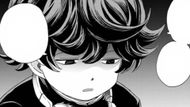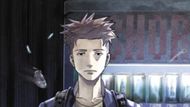Bug Ego is a manga written by ONE (the creator of One Punch Man) that has provoked the interest of manga fans all over the world. The earlier works of ONE were a mixture of caustic satire and nonlinear emotional undertones, and Bug Ego is a new but not new creative direction. Since ONE has a track record of setting the new standards, the question many readers are posing is whether Bug Ego is worth their time.
Bug Ego by Reading is highly recommended to readers of the work of ONE and those who want to read a genre-bending manga that is thought-provoking. The series is an original combination of existential humour, social commentary, and striking character designs, all of which have been hallmarks of the ONE style but take on a new, unexplored thematic territory. It is not just a mere distraction; it is a piece of a story packed in a small but dense and, in many ways, involving way to the end.

Bug Ego starts with a well-known and unfamiliar premise. It narrates about a creature that has the form of an insect that wakes up in a broken world and struggles with identity, meaning, and traces of humanity that vanished a long time ago. The art of ONE, which is less elaborate in the line and less refined in the expression, is enabled to live together with scenes of absurdity and introspection. Critics indicate that the initial volume (18 chapters) establishes a consistent pace: alternating between the scenes of great drama in change with more calm moments of self-doubt. Bug Ego sold more than 200,000 copies in the initial two print editions.
Bug Ego has had a thematic ambition, and this is a strength. Even the title itself gives a clue to the inner struggles of the main character- ego, meaning self-image, and bug meaning otherness and change. To address the matter of existential alienation, ONE employs horror-infused imagery (e.g., blobs of dissolved memory, insect wings unfurling) and comedic beats (e.g., the literal bug panic of the protagonist at most ordinary things). These stratified themes overlap with the previous work of ONE, the criticism of hero culture in One Punch Man, and the development of social pressure in Mob Psycho 100, but Bug Ego is much more limited and personal. This emphasis enables the series to deal with the subject of metamorphosis not only physically but also psychologically.

Bug Ego is effective in terms of structure and pacing. The chapters are around 18-22 pages long, and there are no filler arcs in the story. The initial book leaves it as a cliff-hanger that causes reflection, and not the shock caused by suspense. Bug Ego does not use hyper-spectacle (as in the monster fights presented in One Punch Man), but instead uses the inner conflict and a few visual aids. The art is less polished or even rougher than mainstream shonen titles, but it is a stylistic decision that aids the tone of alienation and self-discovery.
Why Read Bug Ego
Bug Ego is unique in its way in the present manga environment. When many series follow power-scaling battles, Bug Ego prefers identity arcs and mutation as dramatized metaphors. The reputation of ONE provides some level of quality - his scriptwriting merges humor, sadness, and philosophical contemplation. Tight world-building is also in favour of the series: initial scenes depict insect devils re-creating ruins, dialogues involving protagonists discussing the existence of a hive and solo existence, and brief shots of a ruined cityscape. Bug Ego is a rewarding read even at the beginning stages of the series because of its multiple layers. Moreover, translation commentaries indicate that the Japanese version employs subtle punning on metamorphosis-a fact that English readers can discover through the translator's footnotes.

Nonetheless, there are certain qualifiers for the potential readers of Bug Ego. It is more somber and slow than the turbo-charged heroics of One Punch Man. A reader might find Bug Ego too modest or too personal to read if he or she is hoping to read about fights packed with explosives or a lot of slapstick humor. The style of art can also be divisive; the panels are not as polished, there are more handwritten sound effects, and there is experimental design. These components, however, are deliberately oriented towards the theme of fragmentation and self in the story. The polish, as one of the Manga Mogura critics observed, is the crudity.
Conclusively, should you find yourself wondering whether or not to read Bug Ego, a resounding yes is the response to this question, more so when you have a liking for reading manga that incorporates genre tropes with philosophical currents. Bug Ego is a new addition to ONE with an interesting twist, as he remains sharp with his voice yet ventures into new ground. It won't provide you with explosive hero battles, but it will offer intelligent reading with emotional richness and visual imagination. Bug Ego can be a great book for readers who seek something out of the mainstream.
